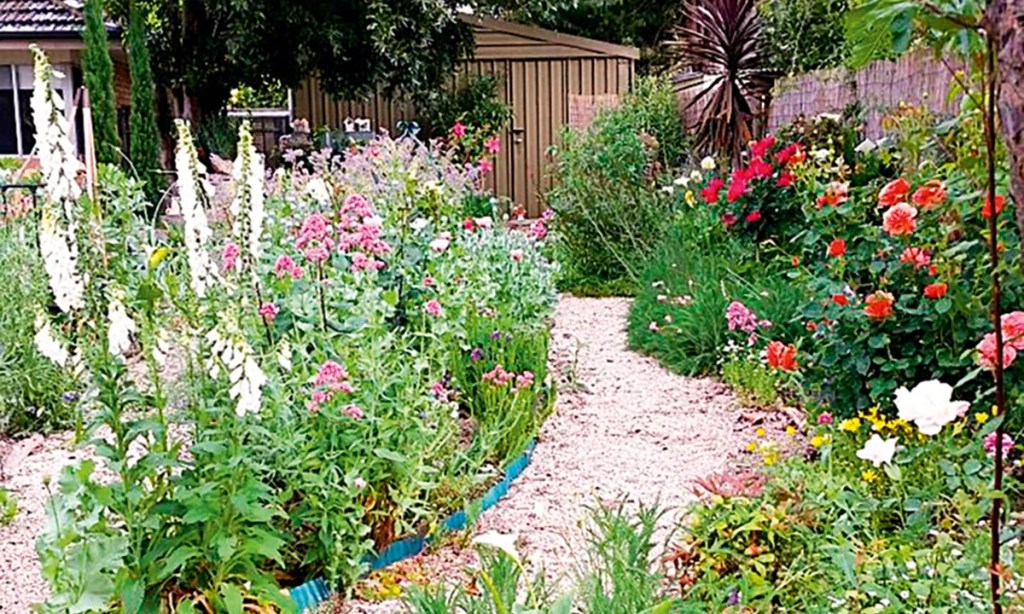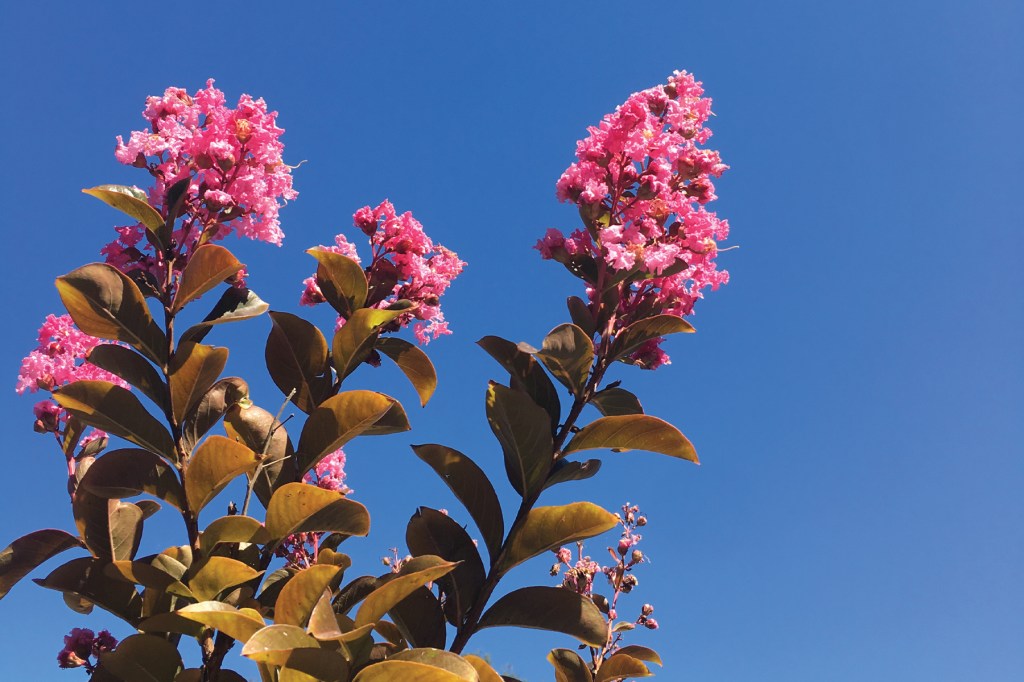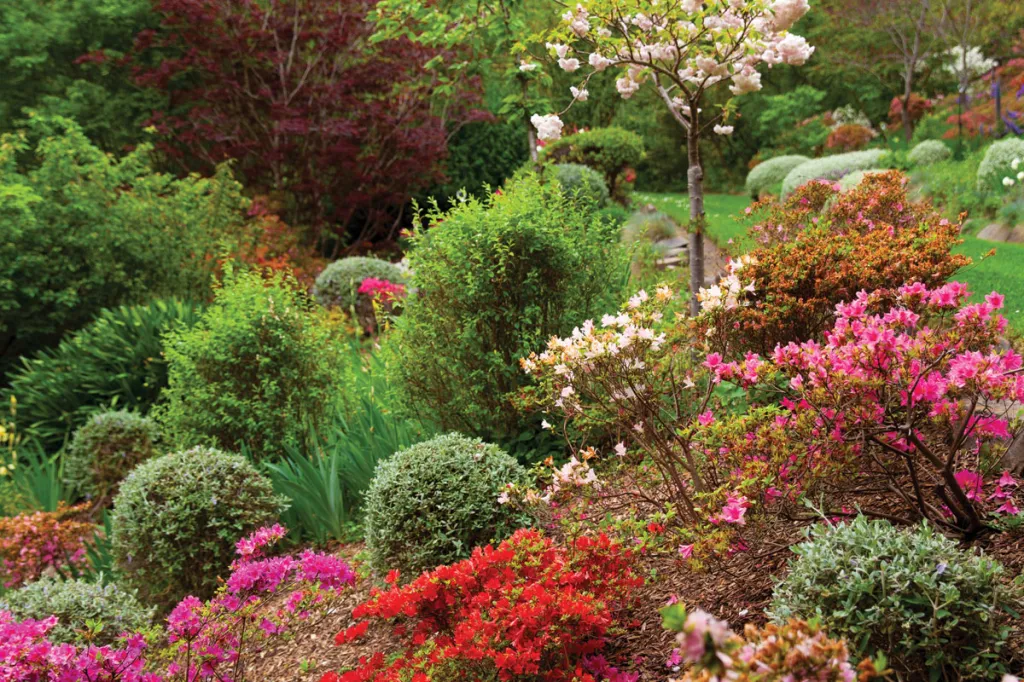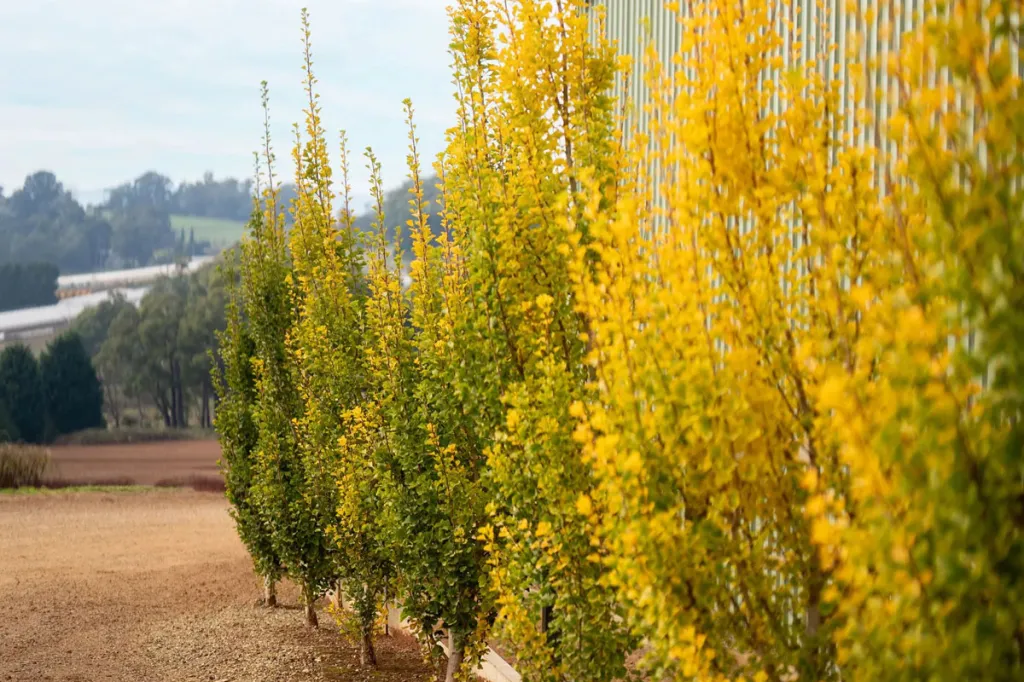In the garden: How to create a cottage garden

Whether meticulously manicured or elegantly unkempt, a cottage garden can be both beautiful and productive.
Early cottage gardens around the villages of England would have been filled with edibles, with flowers poked in between the vegetables and herbs. Bee hives, chooks, ducks and even a goat may have been part of the landscape in these early practical gardens.
Today’s cottage gardens can embrace an informal mixture of annuals, biennials, traditional flowers, herbs, old fashioned perennials, heritage roses, bulbs, and climbers, and often include a vegetable area with some fruit trees.

While colourful herbaceous perennials are a main feature of a cottage garden, they are really like a patchwork quilt of colour, which is only limited by one’s imagination and choice of plants. However, it’s a good idea to design a basic framework by planning for tree areas and creating curved pathways, allowing sections for fruit and vegetable growing.
Select sunny sites for the flower beds and then plan your paths and structures, archways and shady spots, water features, seating areas and lawned sections to ensure all parts of the garden highlight the beauty and romance of the space. It’s so much fun planning a traditional cottage garden, but you can also add any extras to reflect your personality and love of gardening.

Choosing the right plants for a true cottage-style garden should be considered depending on the region where you live, ensuring that the plants will do well in your climate and considering the availability of your choices.
When selecting your plants, it’s important to consider grouping them according to their watering requirements and be aware of the difference in summer flowering annuals, bulbs that are showy and colourful in the springtime, climbers and shrubs that are evergreen or deciduous.
Once the basic garden is planted out, you can always fill in spaces; a cottage garden can be rambling or even a little overgrown if it creates that romance of colour, texture and variety. A cottage garden can be filled with seasonal plants that can be replaced when they die back and many often drop their seed and lay dormant until it’s time to germinate again the following year.
Subscribe for updates

Perennial plantings would be a good way to begin the framework of a colourful cottage garden and these could include salvias, daisies, delphinium, chrysanthemum, aster, bellis perennis, buddleia, daphne, fuchsia and lavender. Climbing plants like wisteria, clematis, jasmine, sweet peas and some old-fashioned climbing roses clambering over structures like archways, gazebos and trellis frames would add character to the overall picture.

Old fashioned favourite annuals to consider planting in your cottage style garden would be hollyhocks, foxglove, sunflower, primula, polyanthus, dahlia, phlox, peonies and lupin and for ground cover plants, add herbs like low growing thymes, Corsican mint, golden oregano, chamomile, feverfew, yarrow, tansy, woodruff, sage and Lady’s Mantle. These fit nicely into spaces right throughout the garden along with your traditional alyssum, Sweet William, lobelia, and dwarf antirrhinum.
A display of showy spring bulbs always complements a cottage garden and planting daffodils, hyacinths, cyclamen, jonquils, and tulips en masse will ensure your spring garden is ablaze with colour.

There’s a certain amount of work to undertake in keeping a cottage garden at its best all year round, so when many of the summer annuals die, autumn and winter annuals can take their place with many self-seeding, so when the first autumn rains arrive they spring to life filling the stark areas with colour.
Maintenance of this style garden should include cutting back shrubs after they finish flowering, trimming climbers to ensure they don’t get out of hand and replanting bare patches right throughout the year. It’s a true delight to own a charming collection of old fashioned flowers, shrubs, and herbs in a beautiful fragrant cottage garden. And make sure you always have water for the birds, bees and butterflies who visit to enjoy the fruits of your labours as much as you do.
This article first appeared in the Spring 2018 issue of SALIFE Gardens & Outdoor Living magazine.




